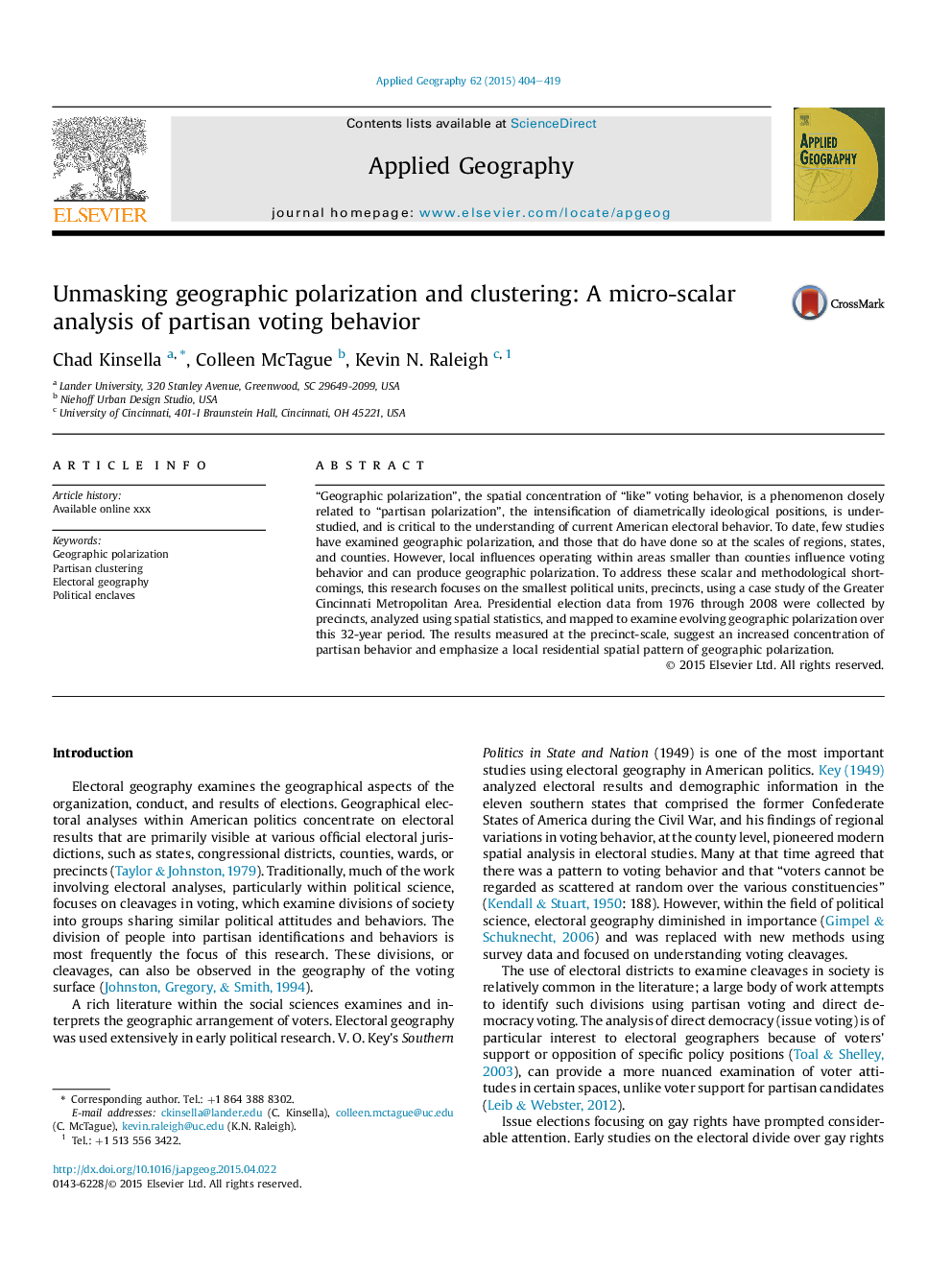| Article ID | Journal | Published Year | Pages | File Type |
|---|---|---|---|---|
| 6538530 | Applied Geography | 2015 | 16 Pages |
Abstract
“Geographic polarization”, the spatial concentration of “like” voting behavior, is a phenomenon closely related to “partisan polarization”, the intensification of diametrically ideological positions, is understudied, and is critical to the understanding of current American electoral behavior. To date, few studies have examined geographic polarization, and those that do have done so at the scales of regions, states, and counties. However, local influences operating within areas smaller than counties influence voting behavior and can produce geographic polarization. To address these scalar and methodological shortcomings, this research focuses on the smallest political units, precincts, using a case study of the Greater Cincinnati Metropolitan Area. Presidential election data from 1976 through 2008 were collected by precincts, analyzed using spatial statistics, and mapped to examine evolving geographic polarization over this 32-year period. The results measured at the precinct-scale, suggest an increased concentration of partisan behavior and emphasize a local residential spatial pattern of geographic polarization.
Keywords
Related Topics
Life Sciences
Agricultural and Biological Sciences
Forestry
Authors
Chad Kinsella, Colleen McTague, Kevin N. Raleigh,
